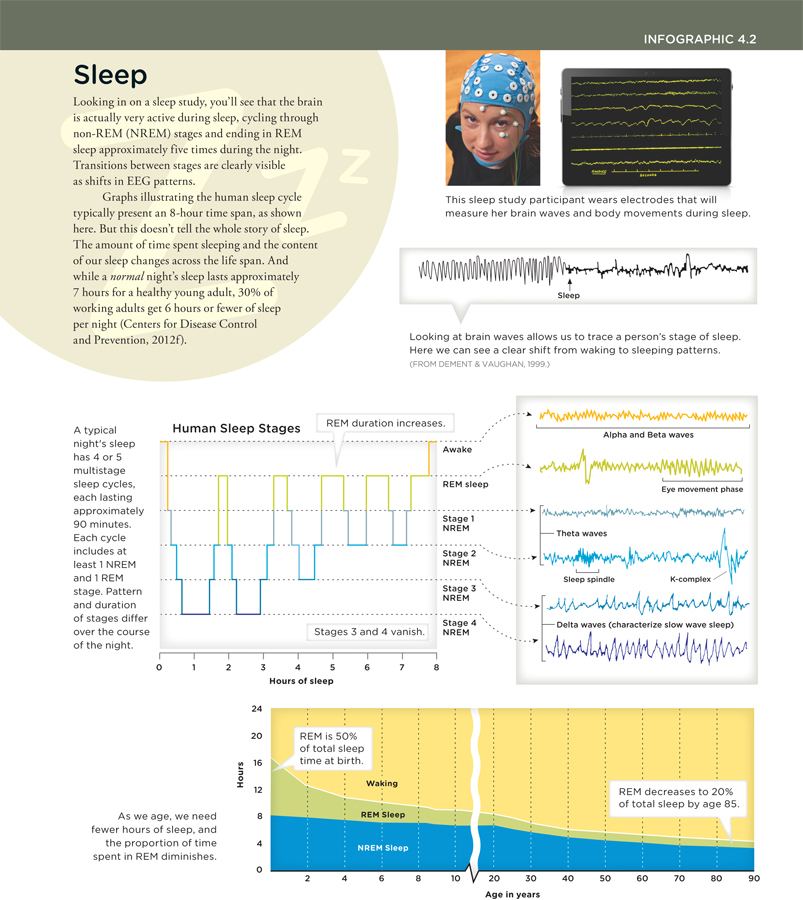Chapter 1. Sleep
Infographic
Looking in on a sleep study, you’ll see that the brain is actually very active during sleep, cycling through non-REM (NREM) stages and ending in REM sleep approximately five times during the night. Transitions between stages are clearly visible as shifts in EEG patterns. Graphs illustrating the human sleep cycle typically present an 8-hour time span, as shown here. But this doesn’t tell the whole story of sleep. The amount of time spent sleeping and the content of our sleep changes across the life span. And while a normal night’s sleep lasts approximately 7 hours for a healthy young adult, 30% of working adults get 6 hours or fewer of sleep per night (Centers for Disease Control and Prevention, 2012).

1.1 Quiz
QUESTION: Kim is participating in a sleep study this weekend. Her physician wants to determine if she might have a breathing-related sleep disorder. The technician hooks her up to a(n) _____ to monitor her brain waves and body movements during sleep.
1.2 Quiz
QUESTION: What type of data needs to be collected in a sleep study to determine the stage of sleep a participant is in?
1.3 Quiz
QUESTION: All of the following information could be used to help determine a person’s stage of sleep EXCEPT:
1.4 Quiz
QUESTION: A researcher studying young adults’ sleep habits is exploring the impact of disrupting all REM sleep sessions during one night’s sleep. Using an electroencephalogram (EEG) she will monitor participants’ brain waves and body movements to determine when they are entering REM sleep. She can expect to wake the participants up approximately _____ during the night.
1.5 Quiz
QUESTION: Sanji is taking an introductory psychology class and is learning about sleep patterns across the lifespan. He was not surprised to learn that as we age we need _____ hours of sleep. However, he had not been aware that the proportion of time spent in _____ diminishes, because he thought that the amount of time dreaming remained consistent throughout life.
1.6 Quiz
QUESTION: According to research, a normal night’s sleep for healthy young adults lasts around _____ hours, yet around _____ of working adults get 6 hours or fewer of sleep per night.
1.7 Quiz
QUESTION: What should a researcher look for on an electroencephalogram (EEG) to determine if someone is in deep sleep?
1.8 Quiz
QUESTION: Matt Utesch suffers from narcolepsy, a neurological disorder characterized by excessive daytime sleepiness and other sleep-related disturbances. According to one theory, narcolepsy symptoms like cataplexy and sleep paralysis indicate that the person is falling into REM sleep in the midst of wakefulness. If Matt were hooked up to an electroencephalogram (EEG) throughout the day, what type of brain waves might be indicative of these types of symptoms?
Activity results are being submitted...